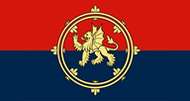Regional Command (British Army)
| Regional Command | |
|---|---|
 | |
| Active | 2011– |
| Country |
|
| Branch |
|
| Type | Command |
| Part of | Home Command |
| Garrison/HQ | Aldershot Garrison |
Regional Command (formerly Support Command) is a two-star command of the British Army. It is the Army’s HQ for the UK, Nepal and Brunei. It delivers Real Life Support to the Army and controls the UK Stations and Garrisons. It is also responsible for engagement with the civilian community and acts as the proponent for UK Operations.[1]
History
Support Command was formed on 1 November 2011 and absorbed the functions of the 4th Infantry Division on 1 January 2012 and of 2nd Infantry Division and 5th Infantry Division from 1 April 2012.[2] Support Command is headquartered at Aldershot Garrison in South East England.[3] Initial published tasks included:[2]
- Lead on the Firm Base Concept for Commander Land Forces from 1 November 2011.
- Deliver Firm Base support as defined by Project AVANTI from 3 January 2012 within 2nd (South East) Brigade, 43rd (Wessex) Brigade and 145 (South) Brigade boundaries and for the remainder within boundaries from 3 April 2012.
- Assume command of British Gurkhas Nepal and British Forces Brunei from 3 January 2012.
- Provide the Land Forces link to the Reserve Forces and Cadets Associations (RFCA) in order to ensure its outputs match the LF requirement. In order to provide land military capability in the most effective and efficient manner.
In 2015 Support Command was renamed Regional Command.[2] The main duties of GOC Regional Command is to:
- Provide the necessary support to the successful delivery of both UK and overseas operations
- Achieve the specified tasks in support of the achievement of Firm Base Outputs
- Deliver the Firm base, championing overseas support, whilst managing the drawdown in Germany
- Support the sustainment of the Army's Moral Component in order to deliver success on operations, at home, and thereafter the Army of the future.[4]
Components
As of 2013, the command had administrative control of the following units:
- 2 (South East) Brigade
- 15 (North East) Brigade
- 38 (Irish) Brigade
- 42 (North West) Brigade
- 43 (Wessex) Brigade
- 49 (East) Brigade
- 51 (Scottish) Brigade
- 143 (West Midlands) Brigade
- 145 (South) Brigade
- 160 (Welsh) Brigade
- British Forces Brunei
- British Gurkhas Nepal
- Aldershot Garrison
- Colchester Garrison
- Catterick Garrison
Under the Army 2020 framework, the command began assisting 1st (UK) Division in managing the seven infantry brigades in the Adaptable Force. In late 2014 / early 2015, 2nd, 15th, 43rd, 49th, 143rd and 145th brigades merged with the other brigades, leaving seven brigades in the Adaptable Force and two other Regional Points of Command in Force Troops Command.[5] The command remains based at Aldershot and, from Spring 2015, had operational control of the nine Regional Points of Command which are:[6]
- 4th Infantry Brigade and Headquarters North East
- 7th Infantry Brigade and Headquarters East
- 11th Infantry Brigade and Headquarters South East
- 38th Infantry Brigade and Headquarters Northern Ireland
- 42nd Infantry Brigade and Headquarters North West
- 51st Infantry Brigade and Headquarters Scotland
- 160th Infantry Brigade and Headquarters Wales
- 11th Signal Brigade and Headquarters West Midlands
- 1st Artillery Brigade and Headquarters South West
Commanders
Commanders include:[7]
- Jan 2012-Aug 2013 Major-General Colin Boag
- Aug 2013 - Major-General Robert Nitsch
- June 2015 - Major-General Richard Stanford[8]
References
- ↑ "Support Command - British Army Website". Army.mod.uk. Retrieved 2013-06-08.
- 1 2 3 "HQ Regional Command". Retrieved 5 March 2016.
- ↑ Map showing the remit of Support Command Accessed: 2013-06-08
- ↑ "Land Forces senior, as of September 2015". Retrieved 5 March 2016.
- ↑ Army 2020 Brochure Accessed: 2013-06-08
- ↑ Army 2020 Update
- ↑ Army Commands
- ↑ The Daily Telegraph (London), 2015, "SENIOR ARMY APPOINTMENT" 16 May 2015, The Daily Telegraph (London),Pg. 30